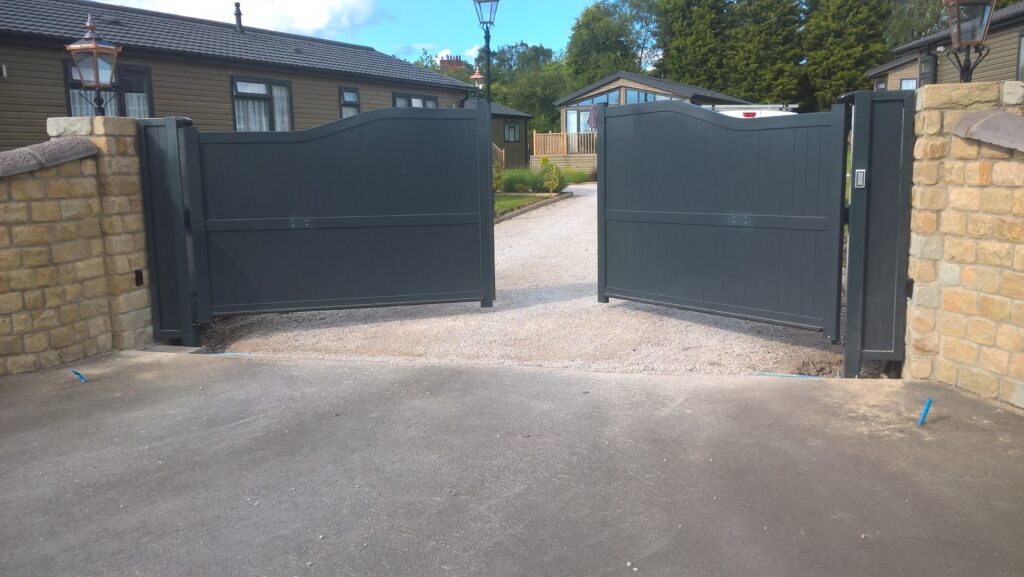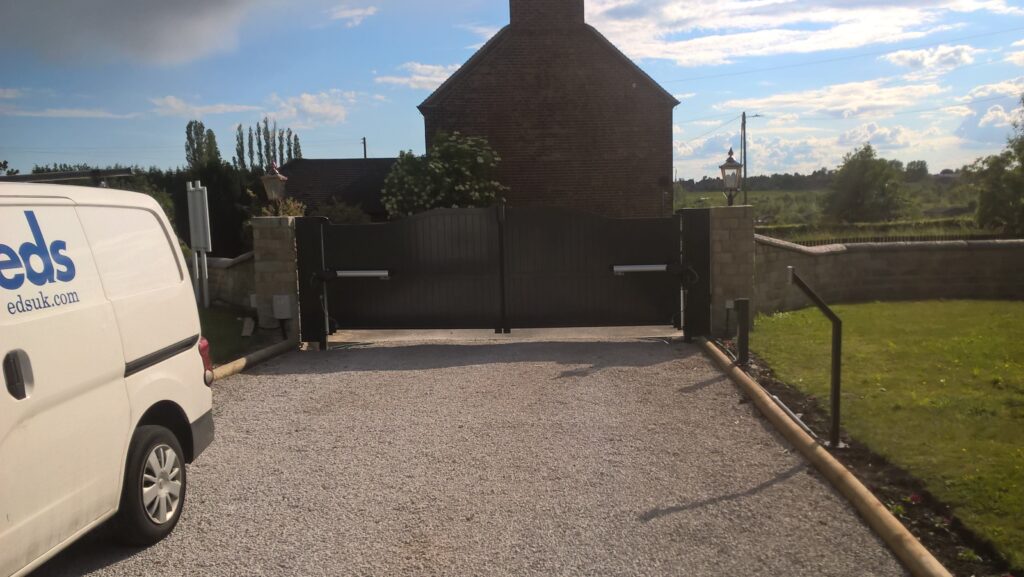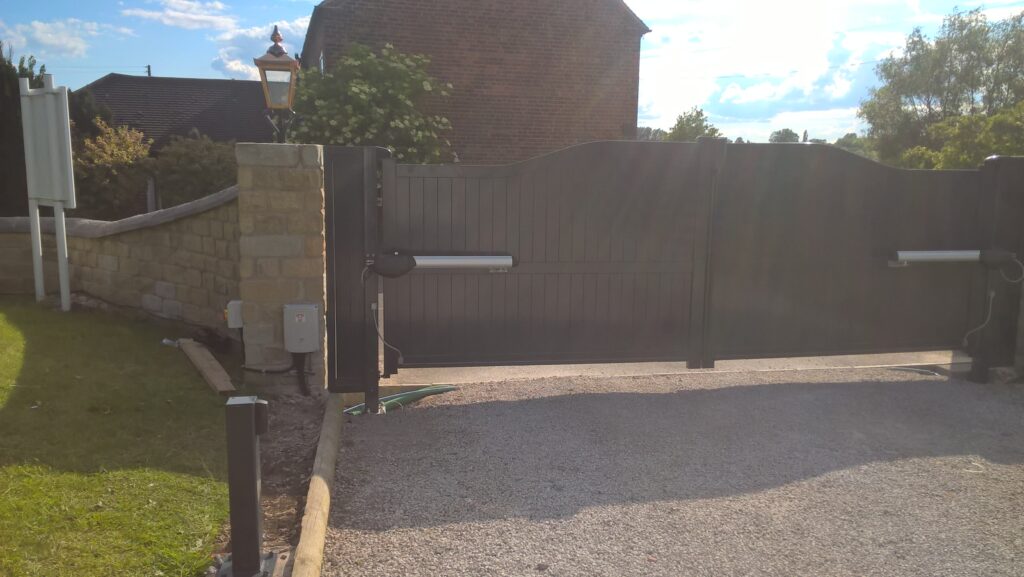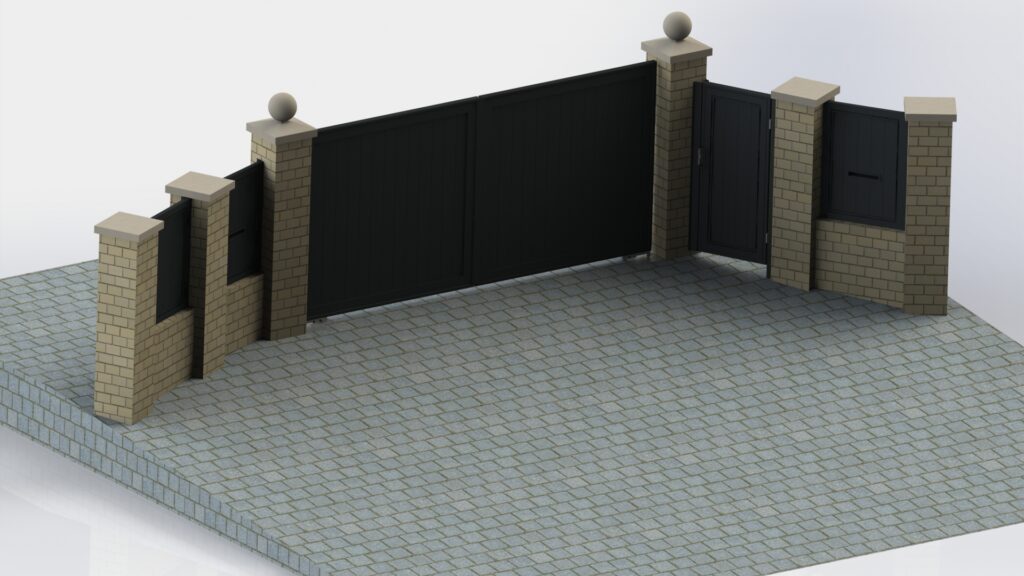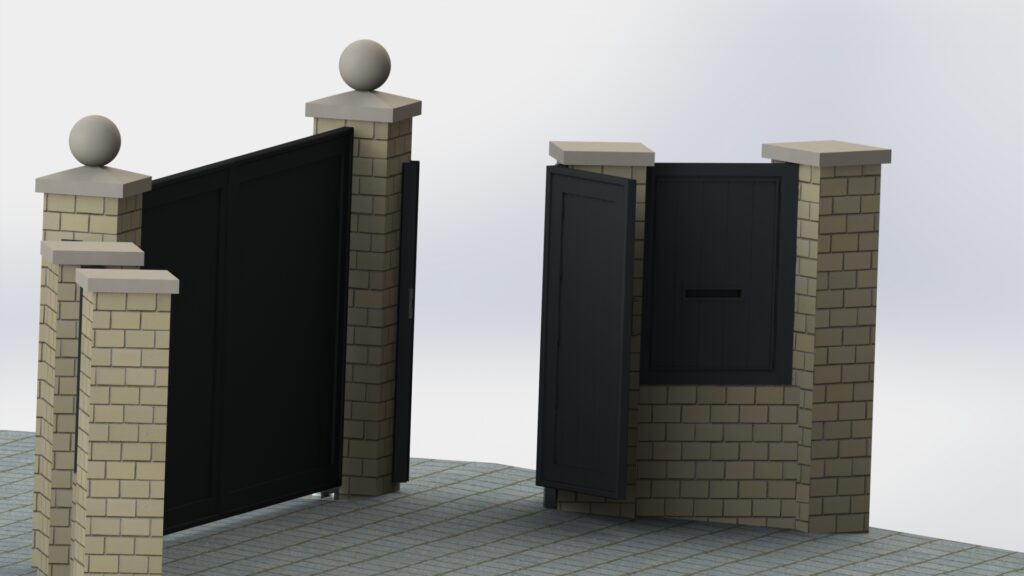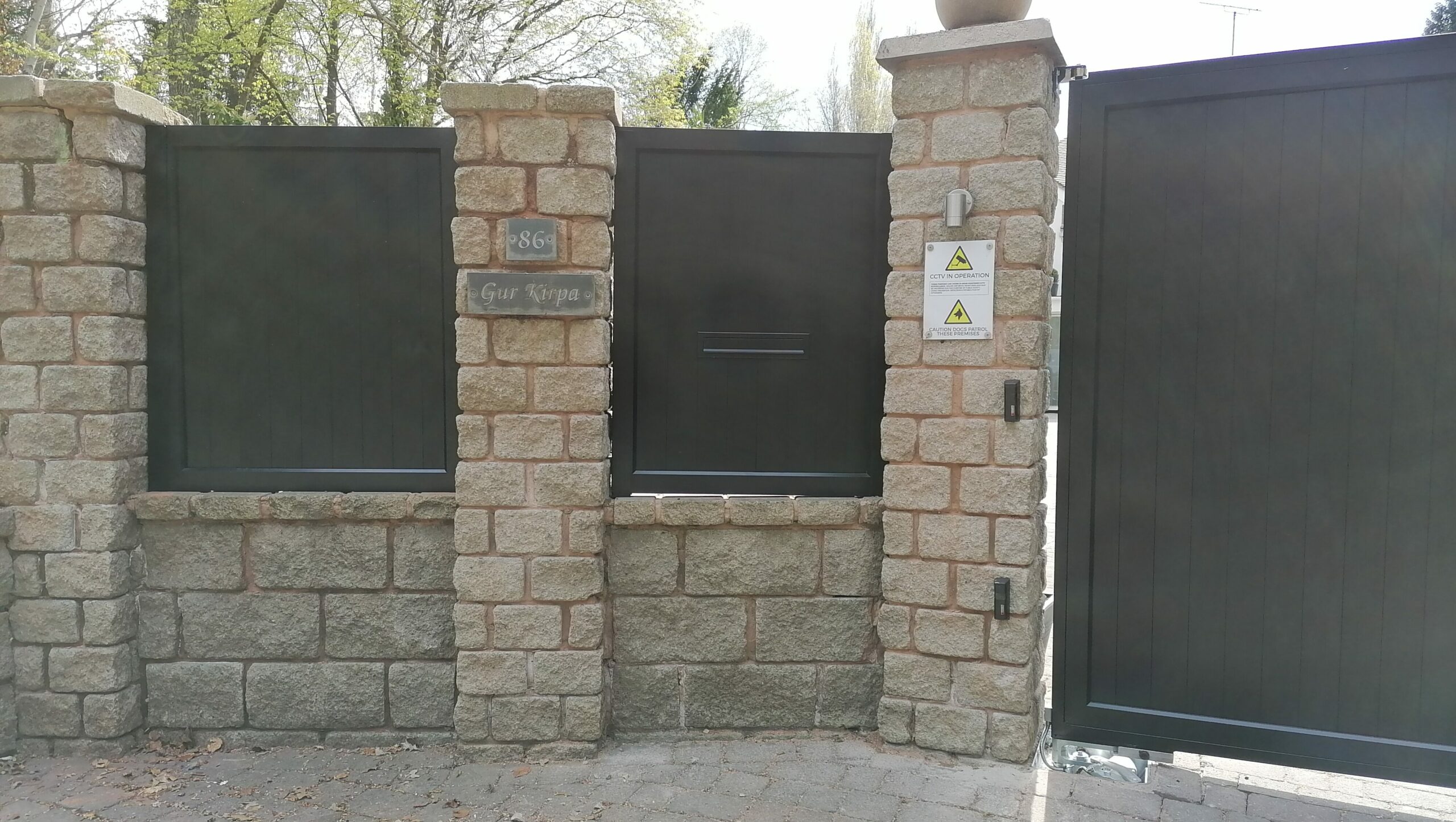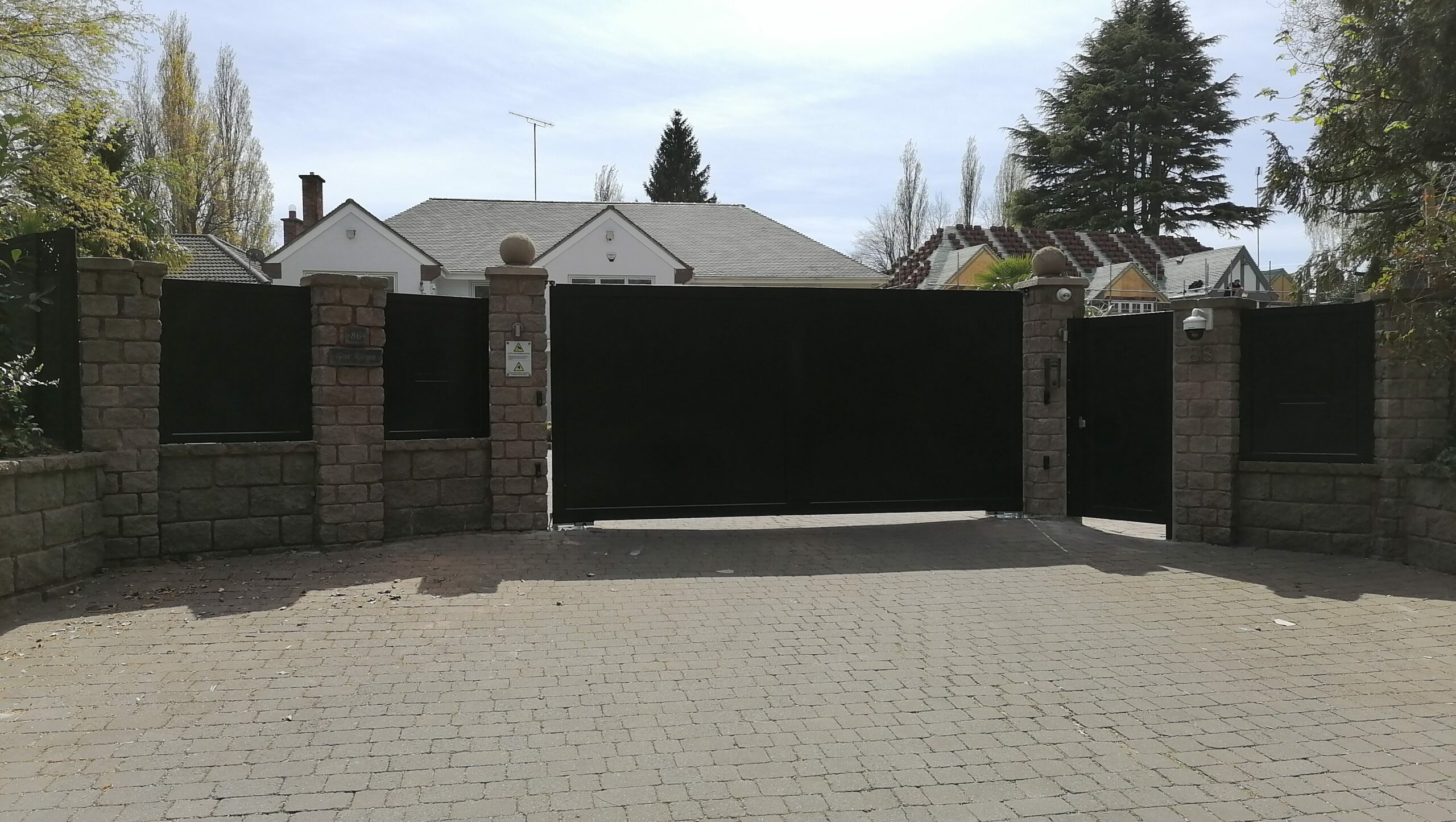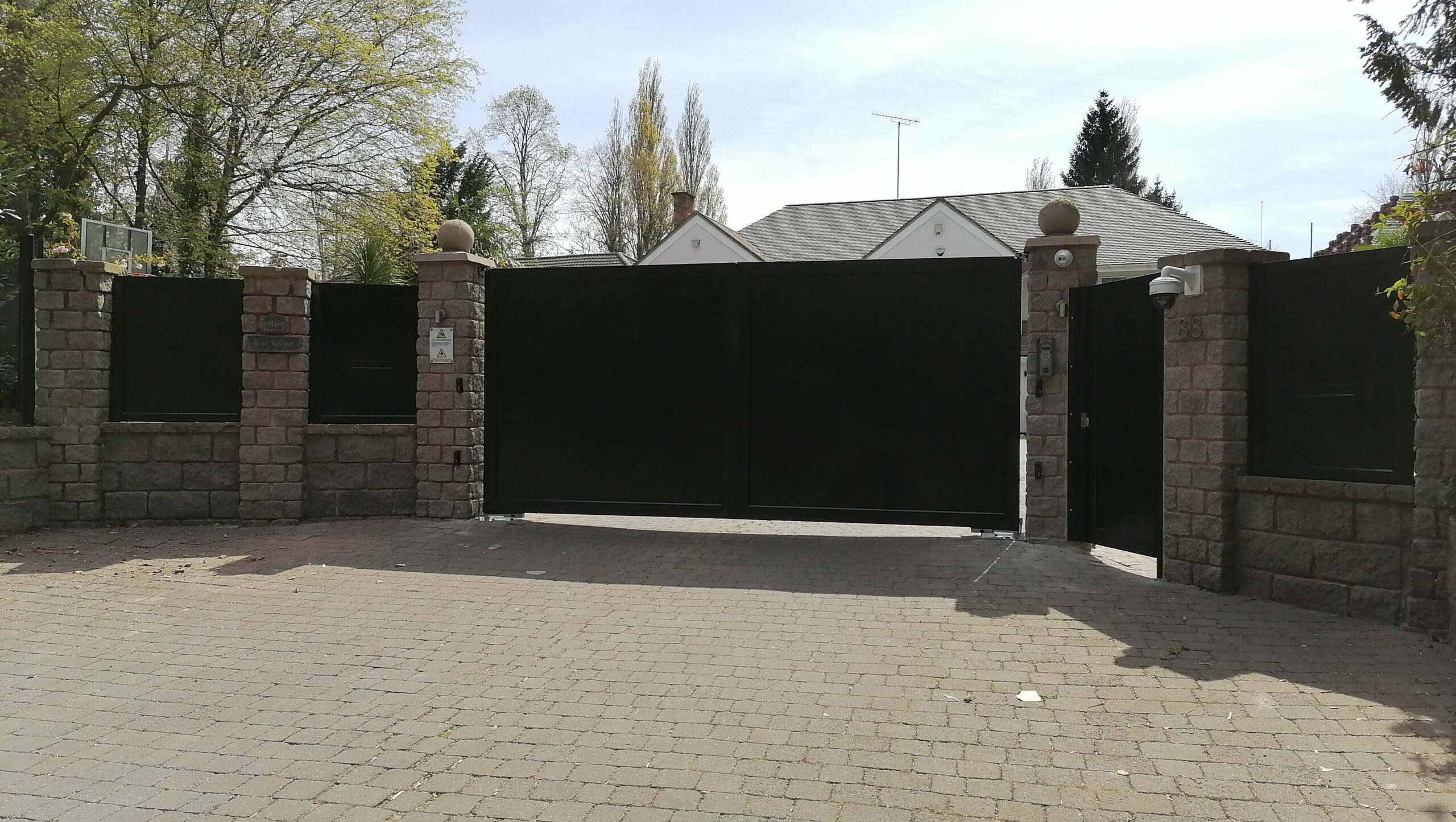Automatic Aluminium Gates
Automatic Aluminium Gates
We have a wide variety of aluminium gates in a range of styles and designs. From powder coated coloured designs to laser cut detail, there is a design to fit virtually any requirement.
Aluminium is highly resistant to corrosion, lightweight and durable, making it an ideal material for use in automated gates. Our designs can be powder coated giving a very wide range of possible finishes.
- Aluminium Gates
- Manual & Automatic Gates
- Sliding Aluminium Gates
- Metal Gates
- Powder coated gates
- Swinging Aluminium Gates
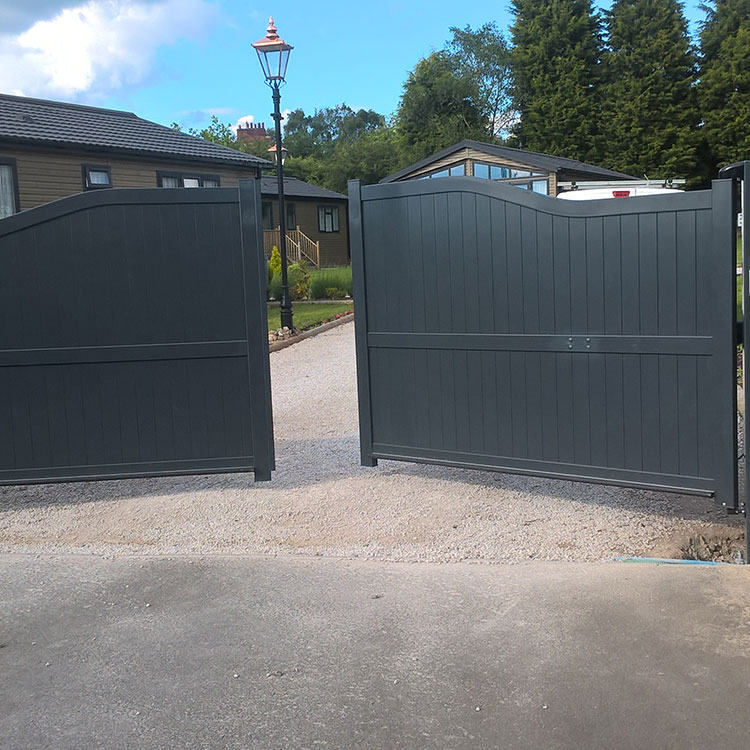
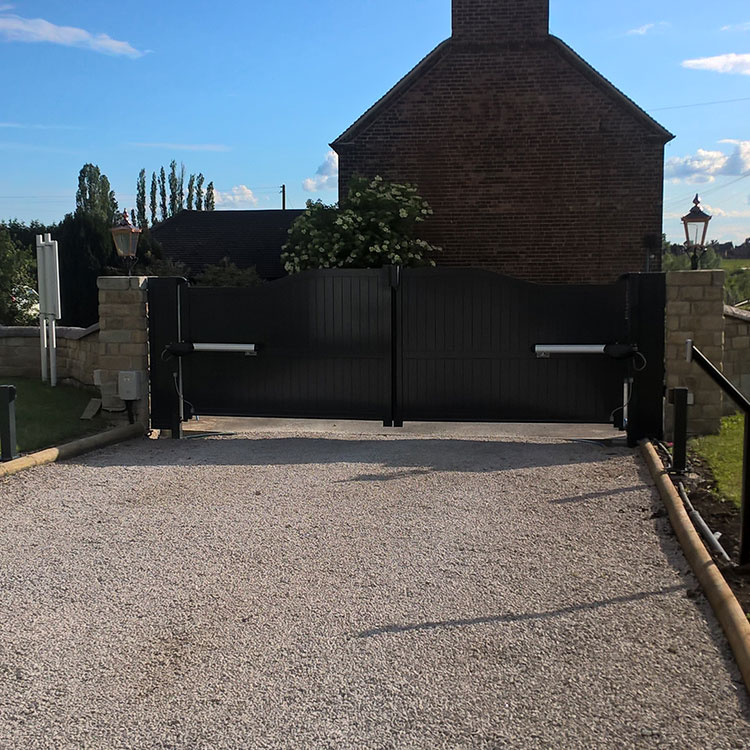
Automatic Aluminium Swinging Gates
Swing gates can comprise of either one gate leaf or two, and can be automated on either basis. Swing gates can also open inward or outward, depending on the location, terrain and other factors. The majority of swing automatic gate systems tend to be inward-opening twin-leaf.
Twin-leaf systems have the effect of halving the area into which each gate leaf opens, thereby limiting intrusion and generally speeding up the operation of the system. Outward-opening swing gate systems are usually installed where the road or driveway inclines, sometimes quite steeply, toward the property. By opening outward little modification in gate design is required, but consideration has to be given to the gate approach, access control and certain safety aspects.
However, under certain circumstances, inward swinging gates can be designed to navigate “up the hill” by means of special hinge arrangements, known as “kicking hinges” or “rising hinges”. Such systems can be installed where outward swinging gates are neither practical nor desirable.
Types of Automatic Aluminium Swinging Gate Systems
Swing gates can be powered by essentially three types of mechanisms
- Underground Automatic Gate Motors
- Surface Automatic Gate Rams
- Universal Arms (sometimes known as Articulated or Jointed Arms)
The latter two types of systems noted above are categorised as “above ground” systems. Underground motors are often referred to as “hidden” systems, since virtually nothing is visible above ground level. Within the first two types above, the drive units can be hydraulic or electro-mechanical in design. Some electro-mechanical systems operate at 240V AC, while others operate with high-efficiency low-voltage systems (typically 24V DC). Universal arms are always electro-mechanical in design.
Automatic Aluminium Gates – Underground Systems
In our experience these are by far the most popular types of systems, even though they tend to be more expensive to install than “above ground” systems. As a rule the equipment costs more because it is more complicated, plus it requires more time and skill to install.
Once installed they are far more aesthetically pleasing. In particular, where a new set of gates are to be installed, the “hidden” motors do not detract in any way from the look of the gates. However there are other factors which can favour underground systems: they generally do not require supporting steel posts, and they can be fitted neatly against new or existing pillars.
Due to their design they can open up to 180° – very useful in some driveways which “fan out” out behind the opening and where the gates might encroach on internal parts of the driveway. When fitted to outward opening gates they do not have motors on the outside, creating a clean aesthetic.
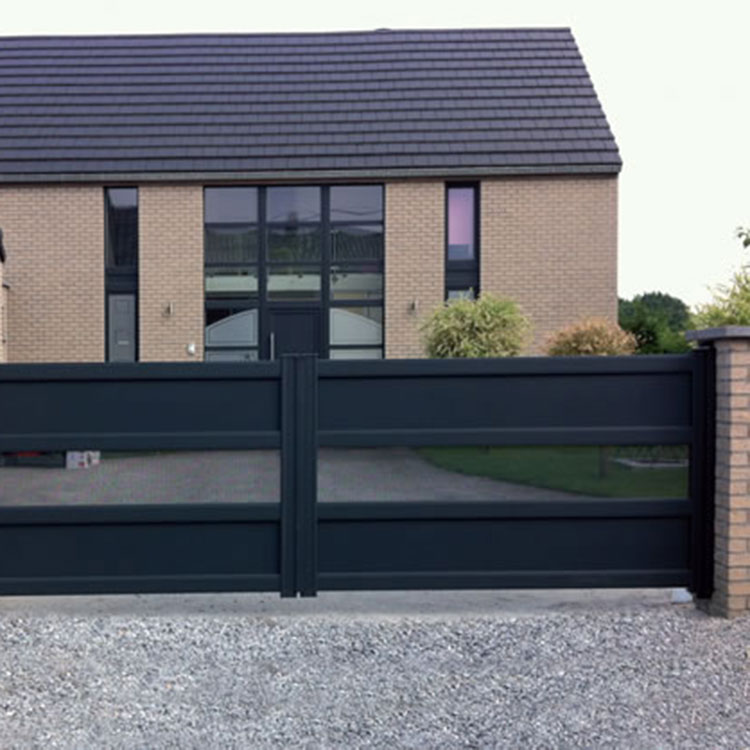
The most common type of above-ground gate system is the ram. This system usually requires steel posts on which to pivot and a vital operating geometry in order to work properly. The opposite end of the gate ram is then attached to the inside of the gate leaf, and via an internal “push-pull” arrangement, the ram opens and shuts the gate. While perhaps not as aesthetically-pleasing as underground system, rams can be very cost-effective solutions.
The rams can also be located behind a feature on the inside of the gate to make them more discreet. As a general rule rams are also more powerful drive units than alternative systems. Thus when specific considerations are involved, such as higher leaf weight or width, high wind factors and some gate constructions, rams can be the preferred option. Where “kicking” or “rising” hinges are required to help the gate navigate a slope, rams are the only option. Depending on other design or installation factors, a ram can typically open a gate leaf up to around 110° from its closed position.
Universal (articulated or jointed) arms are designed to fit easily to most gates, posts or pillars. The mechanism is always electro-mechanical and comprises a motor attached to a caliper-like arm. Since the drive arrangement is hinged in three places, it provides a virtually universal method of fitting and operation. Often, due to their relatively simple design, they require the least skill. Like rams they can be fitted at any level on the gate leaf. However care must be taken to ensure that nothing encroaches into the articulated mechanism during the automatic gate operation. Depending on other design or installation factors, typically a universal arm can open a gate leaf up to around 130 degrees from its closed position.
Within a hydraulic underground system, an electric-powered pump feeds pressurised fluid to a hydraulic jack. It is the jack which then does the work of powerfully opening and closing the gate. This is not dissimilar in concept to that of a car braking system. When you press the brake pedal the degree of pressure has some bearing on the rate at which the car will stop, but it is not the brake pedal which stops the car, it is the hydraulic system pumping fluid to a set of powerful brake disks and pads which actually stops the vehicle in an emergency. Pressing the brake pedal with a relatively small amount of leg force transfers a massive amount of force to the braking system itself. In an underground electro-mechanical system, it is the electric motor which does all the work of opening and closing the gate leaf. Consequently, with some systems there is a higher degree of electric motor “burnout” over the years. However electro-mechanical technology has continued to improve in all fields of engineering, and as result such systems are worthy of consideration.
Hydraulic rams generally operate on a piston-like arrangement. An electric pump pushes and pulls the piston back and forth, opening and closing the gate mechanism. Again, the transfer of electrical to hydraulic power produces considerably greater force within the ram itself. By contrast many electro-mechanical ram systems have a worm drive (sometimes known as a screw drive) mechanism. This is simply powered by an electric motor which winds and rewinds the worm or screw to open or close the gate leaf. As a general rule electro-mechanical ram systems are designed for lightweight, lower-cost gates.
Overall, electro-mechanical systems are cheaper than hydraulic systems, both in terms of material and installation costs. It is our practice at EDS to provide honest appraisals of different systems when providing advice and quotations. While we always advise as to which system we believe, based on our experience, would be the best for a given installation, we regularly provide our customers several alternative options and quotations. This ensures that they can make informed decisions that cover their security/automation requirements, their individual preferences and of course their budgets.
EDS’s gate systems are suitable for both commercial and domestic installations. Our systems can easily power gate leaves up to 7 metres wide and around 3 metres high, although most typical gate leaves tend to be in the region of 1.5 metres to 2.5 metres wide and around 1.2 metres to 2 metres high. Our installations can cover from occasional use, through regular use to intensive use. Thus our swing gate systems are suitable for applications from low-use domestic driveways to intensive situations such as city centre flat developments and busy country estates.
Image Gallery
EDS are able to provide Wooden Gates, Oak Gates, Steel Gates, Stainless Steel Gates, Aluminium Gates and most other types of materials, please contact us for more details.
